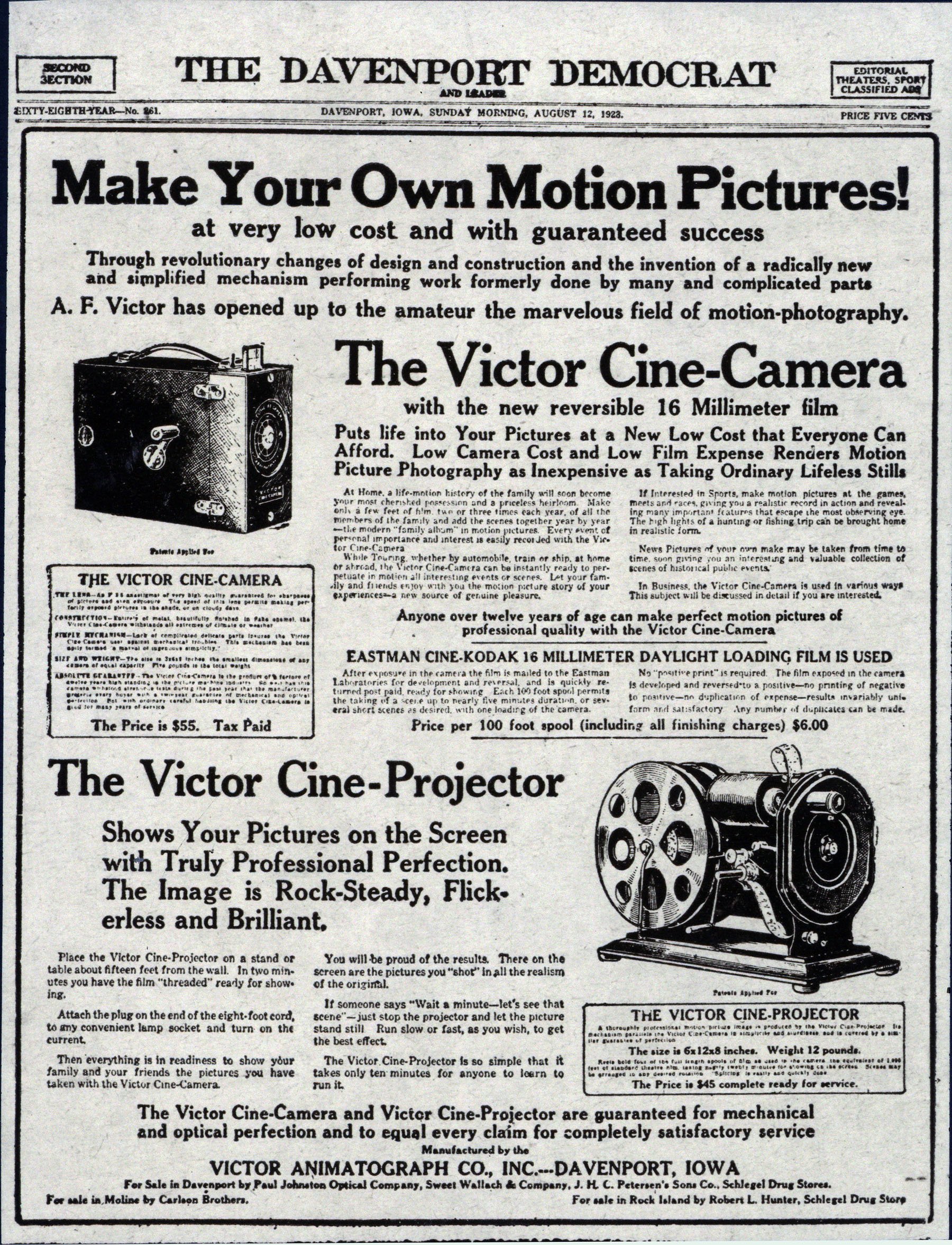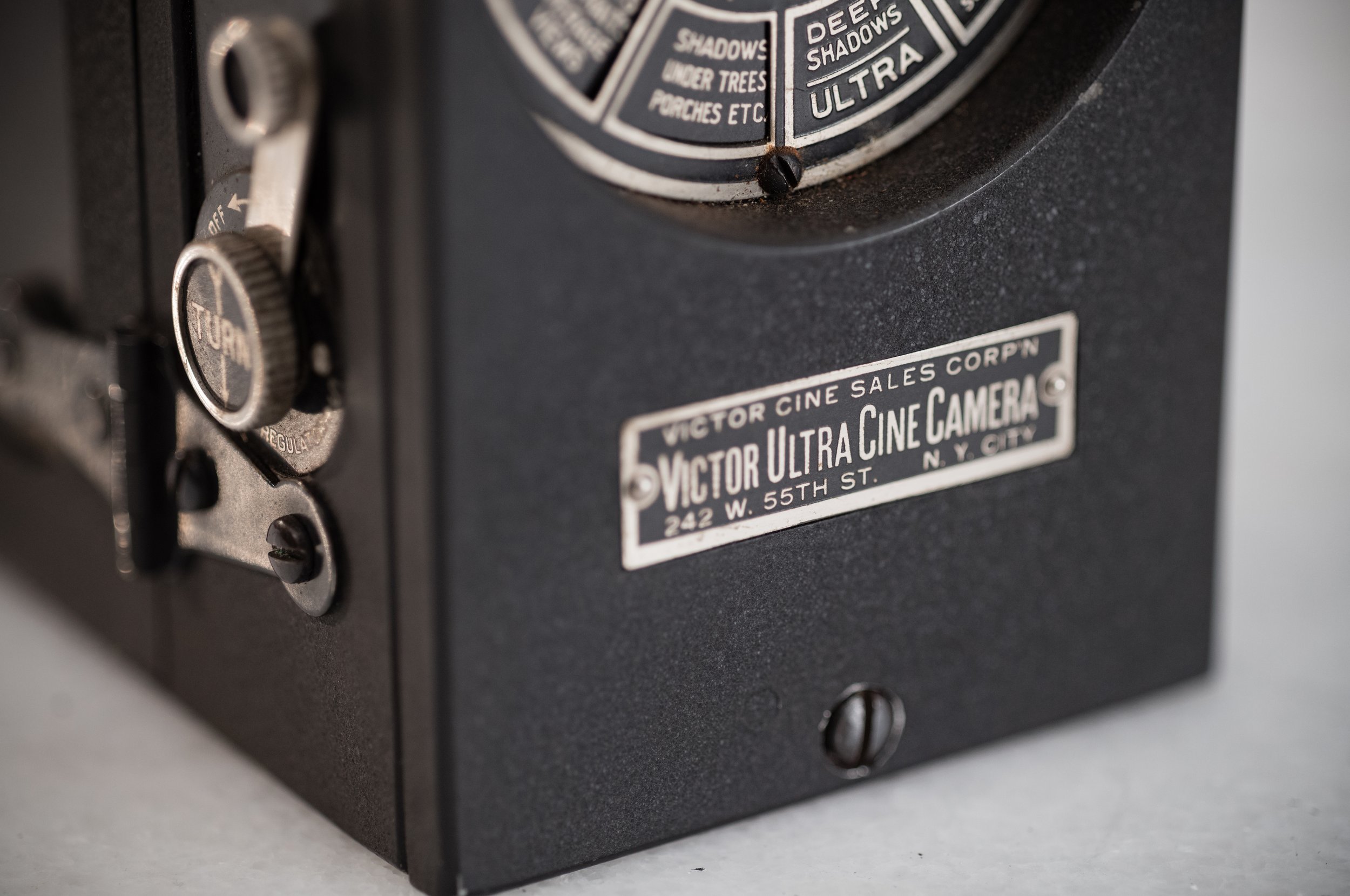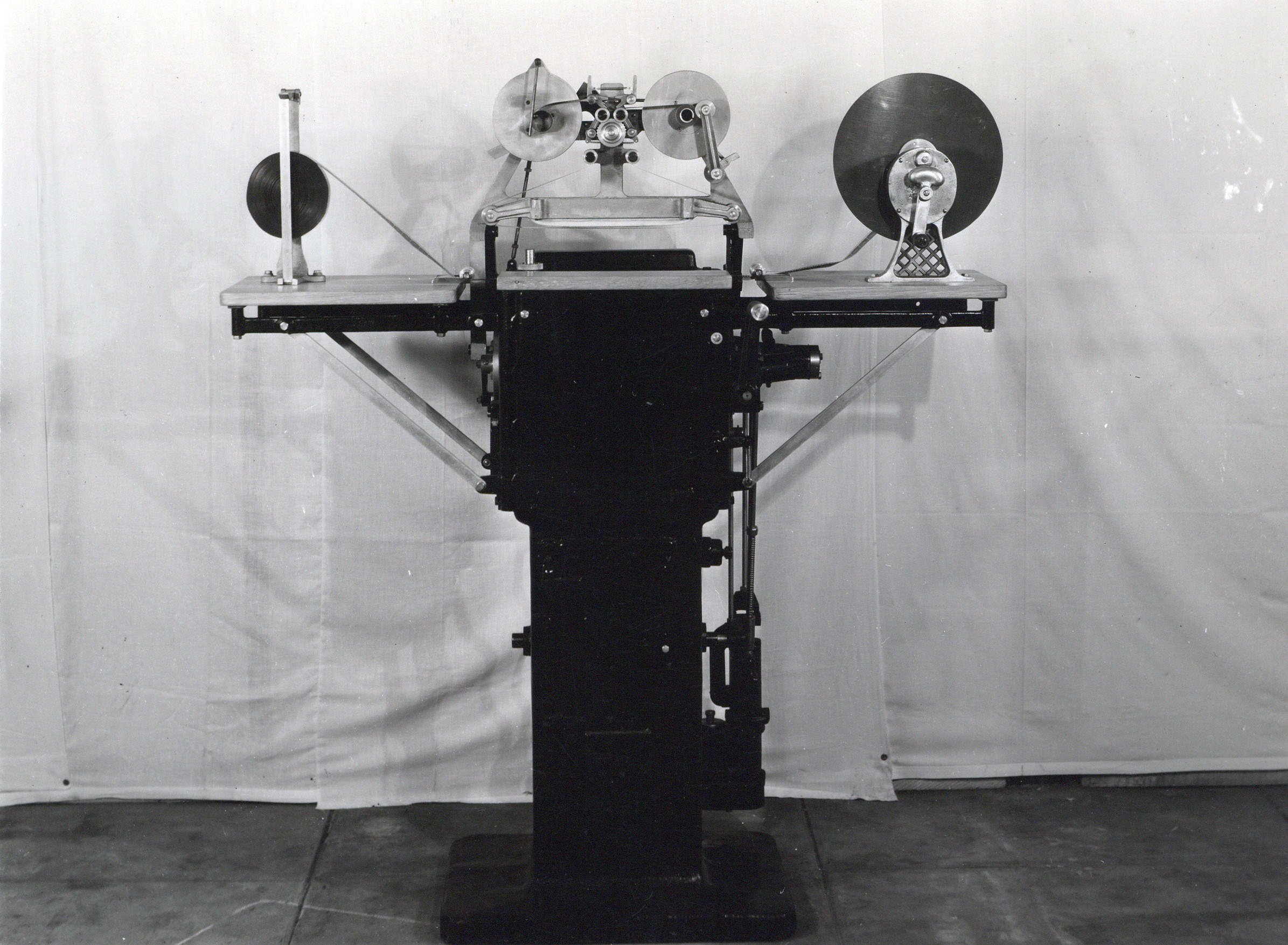Victor Cine and Ultra Cine Cameras
Kodak Introduces 16mm Film
On July 5th 1923, The Eastman Kodak Company of Rochester, New York sold the first commercially successful amateur movie camera in America. The Cine-Kodak was large, boxy and hand-cranked. This first movie camera from Kodak paved the way for a succession of cameras, projectors and accessories that fed both a hobby and an industry.
Kodak 16mm Safety Film introduced at 1923 SMPE Symposium
“Since this film will be available on the market as a standard film for use in amateur motion picture cameras and has already been adopted by a number of designers for use in cameras which will shortly be available, it is perhaps desirable to describe it some what in detail. The film, which is made only on slow-burning safety base, is 16 mm. wide.
Fig. 1 shows the dimensions of the film.”
But most importantly, Kodak also introduced a new film format designed specially for the amateur market. Kodak’s 16mm ‘safety film’ had several advantages. Foremost, since the base for 16mm film was made of cellulose acetate, it was no longer combustible like previous Nitrate based films. Additionally, the introduction of this new reversal film not only resulted in significant cost reductions due to its smaller size, but it also eliminated the need for prints as it produced a positive. This innovative film revolutionized image creation, streamlining the entire journey from capture to viewing and before long was also adopted by professionals. 100 years later 16mm is still used today in productions worldwide.
“This process is the subject of an application for a patent, and its exact nature cannot therefore be revealed at the present time, but it is now possible to obtain first-class positives upon coatings of any thickness of the special emulsion, the density not being dependent upon the evenness of coating, while the control over variations of exposure is quite as good as is possible if a negative be developed and the print made from it in the ordinary way.”
Victor Cine Camera
Kodak supplied advance information on their new 16mm film along with specifications to both Victor Animatograph Co. and Bell & Howell so they could also develop cameras for this new format insuring its success.
Victor Animatograph Co. wasted no time, and that same year, Alexander F. Victor launched his first 16 mm camera, the Victor Ciné Caméra.
It was also hand cranked like the Ciné-Kodak, but it was smaller and less than half the price. At first glance it appeared to be a superior camera, but it had several flaws. It was a relatively simple device compared to its competitor, and the lens was its Achilles heel. The lens was of such poor quality, it was unable to compete with the superior Kodak which went on to be a huge success.
Victor Cine serial no. 262
The Victor Cine camera and projector were offered for sale starting in August 1923, just one month after Kodak’s 16mm film and Cine-Kodak camera were available to the public. The Victor Cine didnt last long and only about 400 were produced. Today only about 20 examples are know to exist making it extremely rare. In 40 years of collecting I’ve only seen two examples come to market.
Victor Animatograph Co. started marketing the Victor Cine Camera and Projector in August, 1923.
WANTED: Mint example of the Victor Cine Camera. If you know of a nicer example, please send me an email.
Victor Ultra Cine Camera
Following Kodak’s success with their Cine-Kodak, Victor wasn’t deterred. He quickly went back to work and the very next year introduced the Victor Ultra Cine Camera, a battery-powered motion picture camera that had several improvements. As the name implies, this model included a variety of innovations.
At first glance, it was an impressive, well thought out amateur cine camera. It was powered by a removable, internal lead-acid battery supplied by the Willard Storage Battery Company and it also had an ingenious Newton-style finder. The finder was a simple sliding mirror allowing for quick changes so it could be used as an eye-level or waist-level finder and it retracted into the body when stored.
It had two indicator windows on the top, one for speed and the other to indicate the film remaining. A Run/Stop switch and speed regulator could be found on the right side of the body and on the left side a single frame release and a focus scale with its adjustment knob.
With the introduction of the Ultra Cine, Victor's equipment was now being manufactured and sold by Victor Cine Sales Corporation, in New York City. The Victor Ultra Cine Camera was the first product to bear the new company name selling in 1924 for $140.
Regrettably, despite its advanced features and compact size, the camera suffered from challenges that ultimately resulted in a similar fate as its predecessor. The high price, coupled with a poorly designed battery which had a tendency to leak combined with a lack of product advertising led to poor sales. Only about 50 Ultra Cine Cameras were produced and just a handful still exist today.
Known serial numbers for the Ultra Cine start at #1101, and only 9 examples are known to still exist.
The examples show here are serial No. 1135 and No. 1140, most likely the 35th and 40th cameras produced.
Serial no. 1135 and no. 1140
Alexander F. Victor and the Victor Animatograph Corporation
Alexander F. Victor was an innovator and showman. He created more than 150 different models of cameras and projectors and applied for 86 patents..
Born on June 20, 1878 in Bollnas, Sweden, Alexander F. Victors passion for engineering and innovation started at age 12 when he met Solomon Andree and was introduced to physics. He became a magician’s assistant as a teenager for The Great Stephanio, adding several illusions to his show. While Stephanio was performing in Paris in 1896, Victor saw a Lumière Cinématographe presentation. He immediately purchased Cinématographe, 'Number 17', and some film, and soon after he started incorporating moving pictures into Stephanio's magic show.
After Stephanio’s death, Victor immigrated to the United States, where he rented a shop in Newark, New Jersey and showed films on a leased Edison Projecting Kinetoscope.
Still the showman, he started his own traveling magic show a few years later. In late 1908, while traveling to Toledo, Ohio, a fire destroyed all his equipment. Now stuck in Toledo, he joined the branch office of the Davenport-based White Lily Washing Machine Co., where he invented an electric washing machine.
But he was still intrigued by illusions and motion pictures, and in 1919, Victor invented a continuous-reduction printer that made 28 mm prints from the movie industry’s standard 35 mm film. That work led him to create the Victor Cine 16mm camera.
The Victor Animatograph Corporation quickly grew and gained a reputation for its innovations. Their projectors were popular both in the United States and internationally.



























